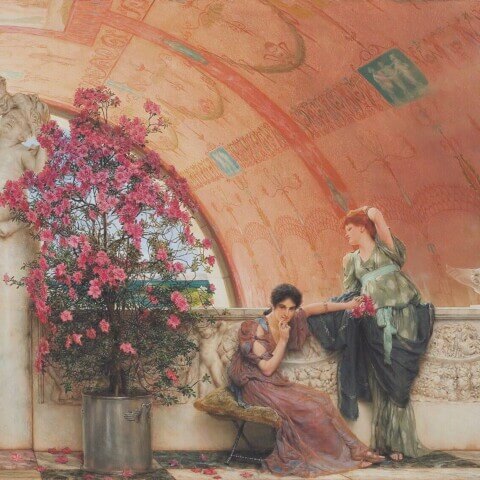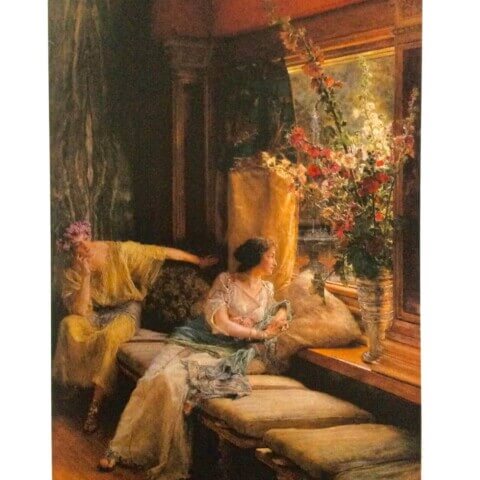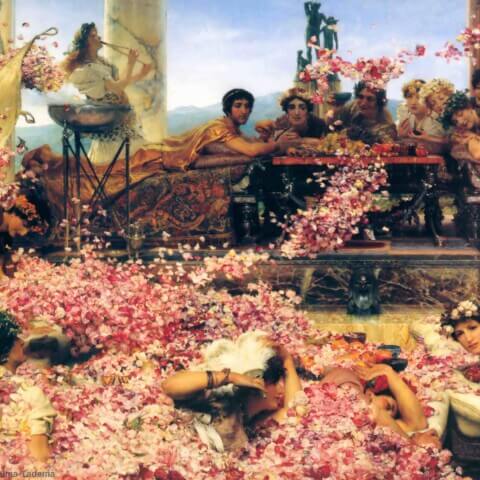Lawrence Alma-Tadema

Sir Lawrence Alma-Tadema (8 January 1836 – 25 June 1912) was a Dutch painter of special British denizenship. He is best known for his intricate and highly detailed depictions of luxury and decadence of the Roman Empire. Living and working during the latter half of the 19th century, his work falls into the genre of the Academic Art and Neoclassicism.
Alma-Tadema was a meticulous researcher who painstakingly sought to ensure that his compositions reflected the true historical context of their subjects. This attention to detail lent an air of authenticity to his works, setting them apart from the grand yet sometimes historically vague pieces of his contemporaries. His canvases, often filled with opulent scenes of daily life in ancient Rome, are noted for their incredible detail, from the architecture and furnishings to the costumes of his figures.
Notably, his oeuvre also includes a number of vibrant, light-filled garden scenes. Alma-Tadema had an exceptional ability to depict different textures and surfaces, from the lustrous sheen of silk to the cool smoothness of marble, which contributes to the vivid, tangible quality of his paintings.
Alma-Tadema gained significant popularity and commercial success during his lifetime. Although his reputation waned after his death, there was a significant revival of interest in his works in the late 20th and early 21st centuries. Today, his paintings are seen as a unique and highly valuable record of the aesthetics of the late Victorian era and are held in major museums worldwide. His grand narrative style and meticulous attention to detail have led him to be seen as one of the foremost painters of the Victorian era.
- 1
- 2










